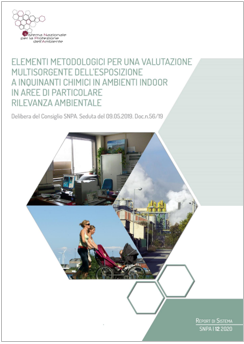Quadro Legislazione Acque
- 0

Quadro Legislazione Acque / Note e Status - Update 12.2024
ID 23102 | 12.12.2024 / Scheda allegata Abbonati Ambiente
Quadro e Status della normativa europea e italiana di attuazione in materia di prot...
This is the final report for a project on ”Digestate and compost as organic fertilisers – Risk assessment and risk management options” (reference FC/2015/0010 - SR3 under Framework Contract ENV.A.3/FRA/2015/0010), prepared by Wood with partners Peter Fisk Associates and Ramboll for the European Commission, DG Environment. The aim of the project was to prepare an environmental and human health risk assessment and a risk management options analysis (RMOA) to provide a sound basis for decision making on the need to propose any regulatory measures to control the risks associated with contaminants in compost and digestate (hereafter referred to as C/D) used as a fertiliser and soil improver. This included a socio-economic analysis of the impacts of possible risk management action.
The market analysis involved collecting available information on all uses and related tonnages of digestate and compost in the European Union, as well as their input materials. The analysis involved a combination of a targeted stakeholder consultation and a review of relevant literature and statistical sources.
For compost we estimate that the current annual EU production of compost amounts to 17.3 million tonnes per year as a central estimate (with a possible range of 13-18 million tonnes). The vast majority of this (ca 14 million tonnes) is derived from green waste and separately collected biowaste, while some 800,000 tonnes are produced from sewage sludge1 . Some sources suggest that compost is (or at least has been) produced from mechanical biological treatment (MBT) of mixed MSW in some smaller countries, but a current EU-wide figure could not be derived. It is estimated that the majority (ca. 85%) of compost is used as a fertiliser or soil improver in agriculture, gardening, horticulture and landscaping.
For digestate, our analysis suggests that around 180 million tonnes of digestate are produced in the EU28 per year, almost half of this in Germany. With 120 million tonnes, the majority of digestate produced in the EU is agricultural digestate (typically a mix of manure and plants, particularly energy crops). About 46 million tonnes are produced from the organic fraction of mixed MSW (mechanical biological treatment – MBT), at least 7 million tonnes from source separated biowaste and smaller quantities (ca. 1.7 million tonnes each) from sewage sludge and agro/food industry by-products. The vast majority of digestate is used directly as a fertiliser.
European Commission 2019
...
add in attachment

ID 23102 | 12.12.2024 / Scheda allegata Abbonati Ambiente
Quadro e Status della normativa europea e italiana di attuazione in materia di prot...
Applicazione articolo 183, comma 1, lettera b-ter), del decreto legislativo 3 aprile 2006, n. 152
Art. 1 (Raccolta e trasporto dei rifiuti urbani indicati nell'al...

Elementi metodologici per una valutazione multisorgente dell’esposizione a inquinanti chimici in ambienti indoor in aree d...
Testata editoriale iscritta al n. 22/2024 del registro periodici della cancelleria del Tribunale di Perugia in data 19.11.2024